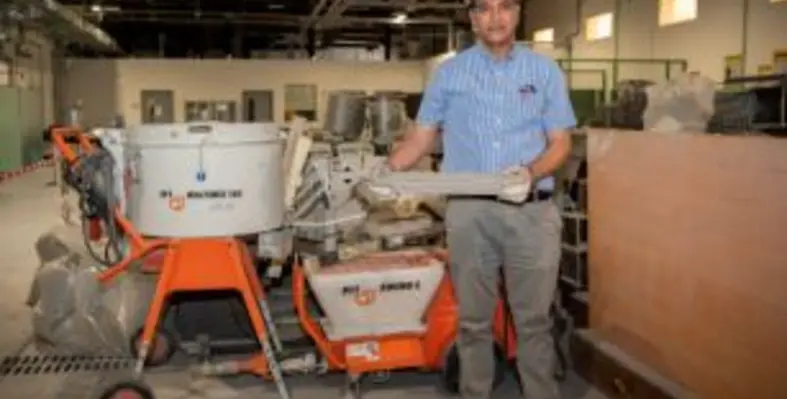American University of Sharjah (AUS) researcher and professor in civil engineering, Dr Adil Al-Tamimi, has been researching the use of robotics in 3D printing of concrete in construction
“Since the construction industry plays a major role in the economic growth of the UAE, we are researching 3D concrete printing as one of the means to achieve automation in the construction industry, which enhances productivity, safety, sustainability, speed, customisability and cost-effectiveness,” said Dr Al-Tamimi.
With the UAE aiming to become a global hub for 3D printing, Dr Al-Tamimi developed a Semi-Automation System in the AUS civil engineering lab to conduct research experiments and produce samples of constructed concrete. This system is used to evaluate the quality of the different experimental mixes in both fresh and hardened states. Currently, there are ten graduate students involved in the research of 3D concrete printing, with several articles published on Dr Al-Tamimi’s research.
One of the outcomes of his research was the building of a 3D-printed concrete villa in Sharjah. This project was conducted in collaboration with Sharjah Research Technology and Innovation Park (SRTIP) and AUS civil engineering graduate alumnus Haidar Al Haidary, who was appointed by MEET Construction, in collaboration with Cybe Construction, to supervise the construction of the villa. A number of AUS engineering students were also involved in the process, offering them hands-on training opportunities.
Several research projects were also conducted under the umbrella of Dr. Al-Tamimi’s work and were overseen by him, leading to other industry collaborations. This included two senior design projects in 2020 on the mobility of robotic arms used in coating concrete with a self-cleaning layer, which allows concrete to retain its light color longer as well as removes airborne toxins; and two graduate theses in 2020 and 2021 on 3D concrete printing of structural multilayers beams. The majority of the research on 3D printing of concrete included the use of manual extrusion, which is a process of shaping different materials by forcing them through shaped designs at high pressures. However, Dr Al-Tamimi’s work is moving away from manual extrusion by using the AUS Semi-Automation System.
To advance the research further, Dr Al-Tamimi has sought collaborations with local industries to use robotic arms in extruding concrete, redesigning the print heads/nozzles, integrating printing mechanisms into existing equipment on construction sites and using fibers to enhance the strength of the extrusion.
“We continuously welcome new collaborations with governmental departments and the private sector to work on guidelines for structural integrity, safety and long term performance of 3D-printed concrete to facilitate the wide use of this automated industry,” said Dr Al-Tamimi.
The department of civil engineering is recognised throughout the region for the exceptional education it offers through undergraduate and graduate programs. AUS is ranked number one in the UAE and among the top 150 universities globally for civil and structural engineering according to QS World University Subject Rankings (2023).







